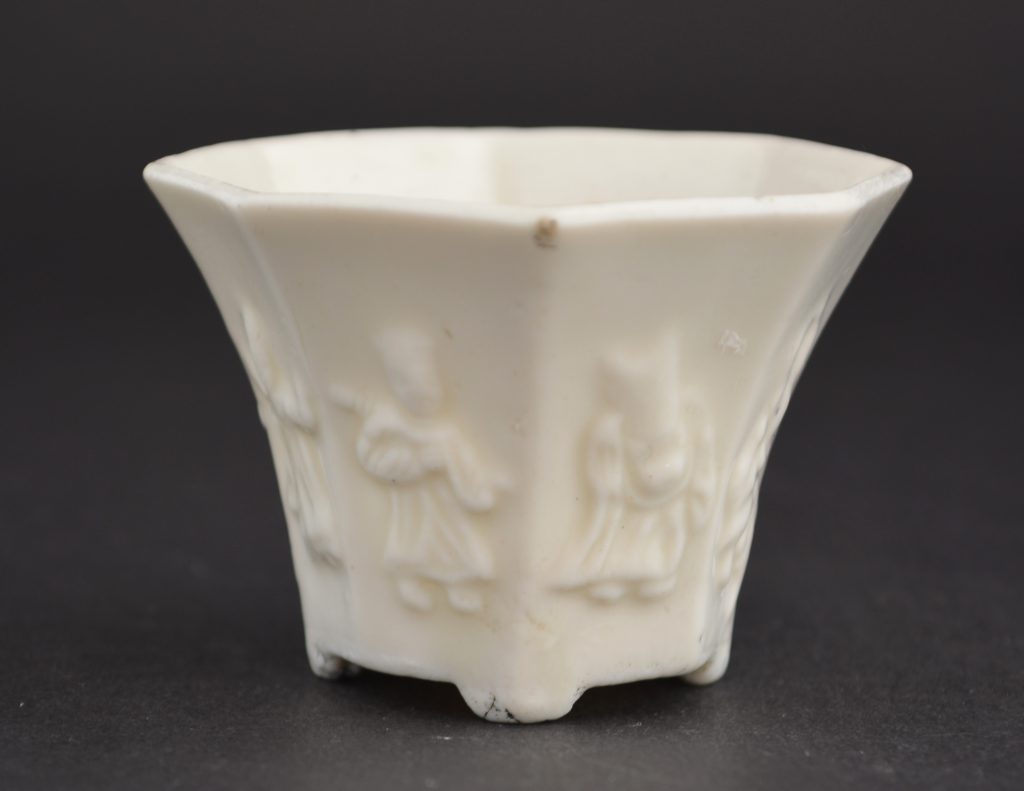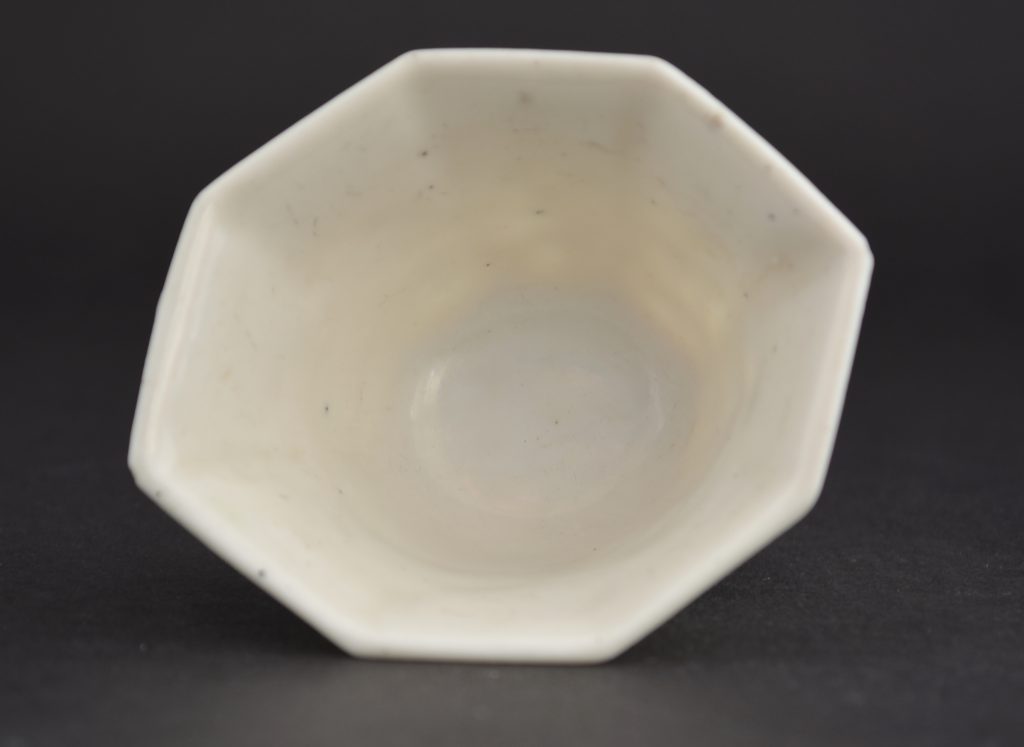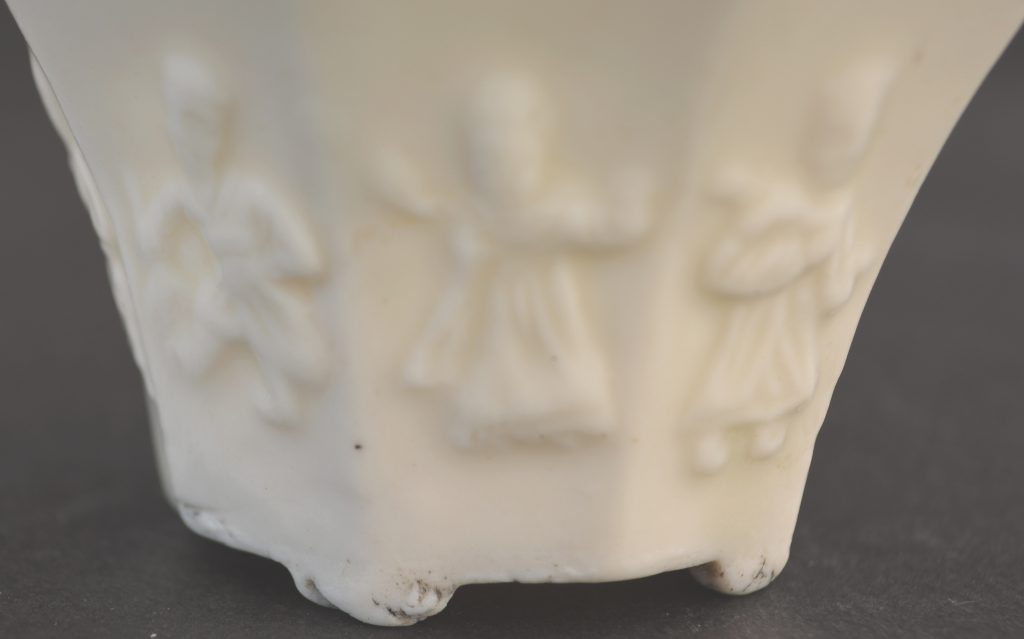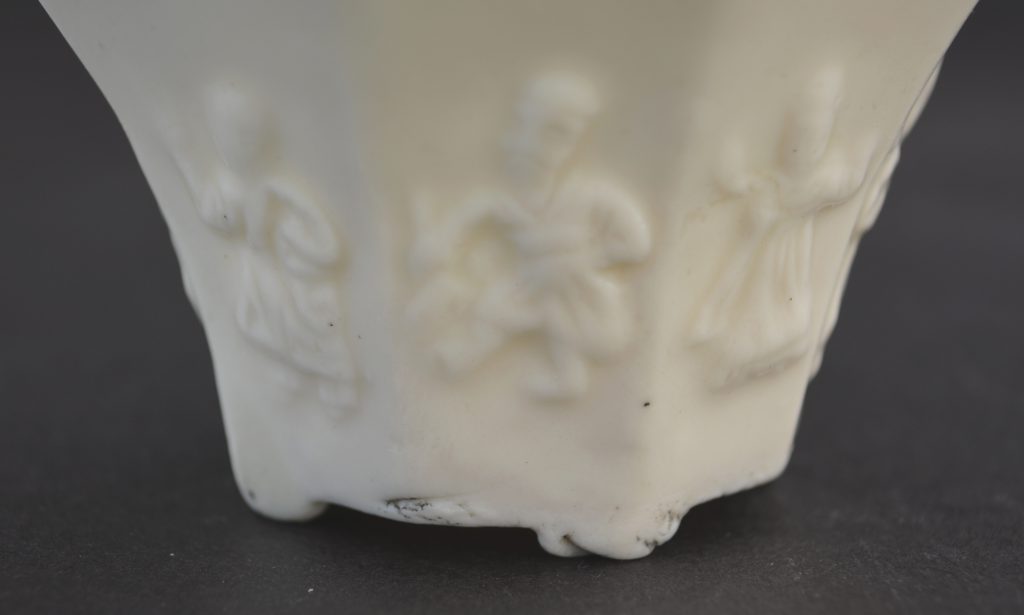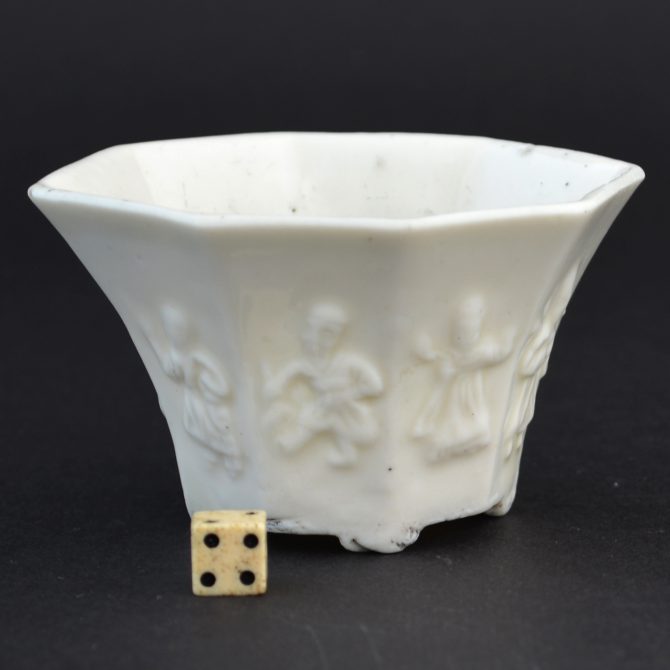
KANGXI 1662 – 1722 Blanc de Chine Porcelain
A Kangxi Blanc de Chine Porcelain Faceted Octagonal Wine Cup Made in Dehua, Fujian Province.Small seal Mark to the Base. The Sides with Recessed Moulded Panels Containing Figures, Possibly the Eight Immortals.
SOLD
- Condition
- a minute glaze chip to the inside rim c. 2 x 2 mm.
- Size
- Length : 8 cm (3 1/4 inches)
- Provenance
- From a Private English Collection of Blanc de Chine Porcelain.
- Stock number
- 23009
- References
- For a very similar octagonal beaker with the same mark dated to c.1690 see : Blanc de Chine (Introduction by John Ayres, Marchant & Son, 2006. ISBN 0-955-4009-0-2) page 151, plate 120. For a very similar Blanc de Chine Beaker with London Decoration of c.1700 to 1720 sold by R&G McPherson Antiques see our `Sold Items` 17976, for a Kangxi beaker of this design by Zhongtun shi (Mr. Zhongtun). For a similar English decorated blanc de chine beaker, also made by Zhongtun shi (Mr. Zhongtun) described as "painted in Holland" see : Ancient Chinese Trade Ceramics from The British Museum (Regina Krahl and Jessica Harrison-Hall, National Museum of History, Republic of China,1994. ISNB 957-00-3623-0) page 330, plate 149. For two similar London decorated blanc de chine porcelain beakers see : Chinese Export Ceramics (Rose Kerr, Luisa Mengoni, Ming Wilson, V&A Publishing 2011. ISBN 9781-85177-6320) page 99, plate
Information
Blanc de Chine Porcelain :
The porcelain known in the West as Blanc de Chine was produced 300 miles south of the main Chinese kiln complex of Jingdezhen. The term refers to the fine grain white porcelain made at the kilns situated near Dehua in the coastal province of Fujian, these kilns also produced other types of porcelain. A rather freely painted blue and white ware, porcelain with brightly coloured `Swatow` type enamels as well as pieces with a brown iron-rich glaze. However it is the white blanc de Chine wares that have made these kilns famous. The quality and colour achieved by the Dehua potters was partly due to the local porcelain stone, it was unusually pure and was used without kaolin being added. This, combined with a low iron content and other chemical factors within the body as well as the glaze, enabled the potters to produce superb ivory-white porcelain.
